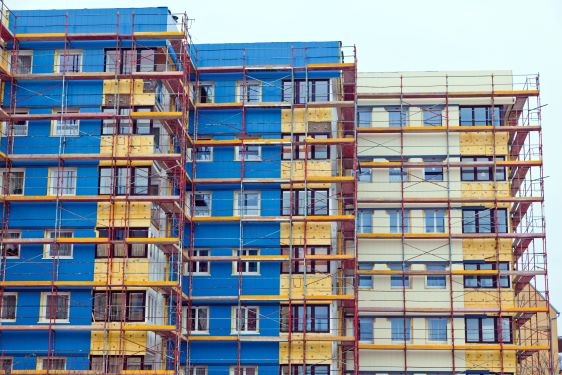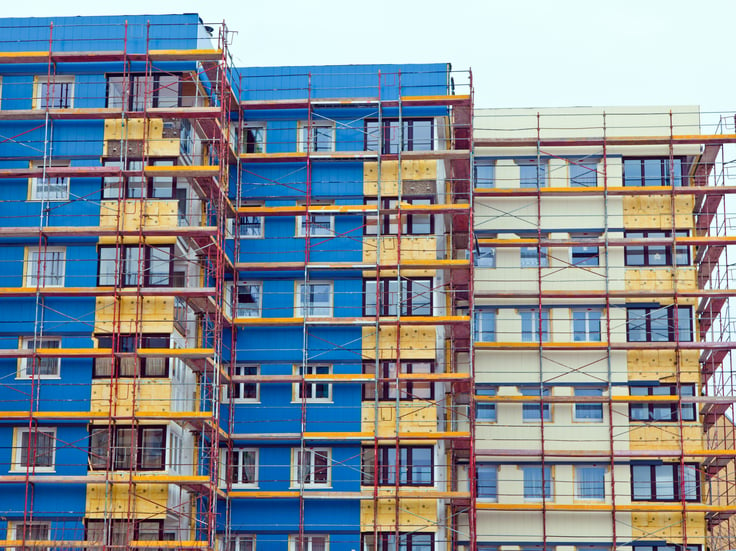Last 4 August, the Royal Decree of the Retrofitting Plan for Buildings (REE)was approved, as a strategy for the state economic reactivation derived from Covid-19.
What is its purpose?
Progressively decarbonise the existing real estate stock and reduce its energy demand. With its application, it is estimated to achieve the European objectives stipulated to reach a zero-carbon emissions scenario by 2050 and thus minimize 30% of the current energy consumption from the Spanish building stock.
Due to the Covid-19 situation, the European Union is focusing its economic recovery plan on energy transition and digitalization. It is expected that the sustainability measures described in the Plan will promote the creation of around 48,000 jobs annually and boost the reactivation of activity in the construction industry.
Who can participate?
They are eligible to participate:
- Communities of owners, renewable energy communities, citizen energy communities, owners (physical or legal) of buildings, groups of building owners, building operators, lessees or concessionaires, energy service companies or providers, and local authorities.
They receive special attention:
- Determined consumers within vulnerable groups, public protection, or located in Urban or Rural Regeneration and Renewal Areas, who will receive an additional 15% aid for their housing improvement actions.
- Renewable energy communities and citizen energy communities will have the option of additional aid up to 20% more for improving the envelope based on the eligible expenditure.
What type of buildings can apply for the aid?
They have the possibility to apply for financial aid:
- The buildings constructed before 2007. Extensions of surface area or built volume, as well as changes in use, are excluded.
- The buildings with single-family and/or multifamily housing typology, and buildings for healthcare, administrative, educational, and cultural use. The Communities of Ceuta and Melilla will have alternative subsidies in addition to the proposed ones.
What does the REE Plan subsidize?
35% of the cost of the intervention for the:
- Improvement of the thermal envelope of the building
- Improvement of the energy efficiency of your thermal facilities, such as the replacement of conventional energy with renewable energy, of subsystems for generation, distribution, control, and emission of thermal facilities. Home automation, monitoring systems, as well as alternative digital systems that improve the management and consumption reduction of energy are included.
Aid is limited to 25% in the rehabilitation of single-family homes for the improvement of their envelope and facilities.
and 15% of the cost of the intervention for the:
- Improvement of the lighting facilities.
Subsidies with incentives
Those dwellings where the performance means an increase of two letters of the original energy rating, or reach the "A" or "B" rating, will be entitled to a financial improvement of their application.
In the same way, those actions that integrate the improvement of two interventions are eligible for an increase of 20% of the subsidy. It is stipulated as follows:
- Need to reduce, by at least 30%, the heating and cooling demand of the thermal envelope
- And combine with another measure of the facilities whose substitution reduces the existing thermal generation capacity by 60%. In the case of buildings intended for a use other than housing, this point may be substituted by improving the energy efficiency of at least 25% of the illuminated surface.
In the case of a renewable energy self-consumption facility for electricity generation, with or without storage, and whose installed capacity is at least 10% of the contracted electricity capacity, it will be equivalent to one of the improvement actions mentioned in this same section.
What are the retrofitting improvements to be achieved?
The actions carried out for retrofitting must improve the overall energy rating of the building by at least one letter measured on the scale of carbon dioxide emissions (kg CO2/m2 per year) compared to the initial energy rating of the building.
Who coordinates it?
The Retrofitting Plan for Buildings has been proposed by the Ministry for Ecological Transition and the Demographic Challenge (MITECO) and will be coordinated by the Institute for Energy Saving and Diversification (IDAE).
The aid proposed by the Government complements the National Energy and Climate Plan (NECP) 2021-2030 and the Long-Term Strategy (LTS).
The call for applications will be managed and published by the Autonomous Communities and Cities of the State before 31 July 2021.
How are the aids distributed and where do they come from?
The subsidies come from the National Energy Efficiency Fund, and are distributed according to the population census on the basis of primary residences:
| Autonomous community | Budget (€) |
| Andalusia | 51,216,000.00 |
| Catalonia | 48,855,000.00 |
| Madrid | 40,965,000.00 |
| Valencian Community | 32,961,000.00 |
| Galicia | 17,571,000.00 |
| Castilla y León | 17,220,000.00 |
| Basque Country | 14,748,000.00 |
| Canary Islands | 13,104,000.00 |
| Castilla - La Mancha | 13,065,000.00 |
| Aragon | 8,940,000.00 |
| Region of Murcia | 8,550,000.00 |
| Asturias | 7,596,000.00 |
| Balearic Islands | 7,128,000.00 |
| Extremadura | 7,050,000.00 |
| Navarre | 4,125,000.00 |
| Cantabria | 3,927,000.00 |
| La Rioja | 2,157,000.00 |
| Ceuta | 414,000.00 |
| Melilla | 408,000.00 |
| TOTAL | 300,000,000 |
This budget can be increased by the National Energy Efficiency Fund and the European Regional Development Fund (ERDF), as well as other aid programmes from the European Union to mitigate the effects of Covid-19.
These aids are compatible with other aids granted as long as the cost of the subsidized activity is not exceeded and the limits of Regulation 651/2014 of June 2014 are met, and that the aids granted by other Administrations for the same purpose do not have co-financing from European Funds.



